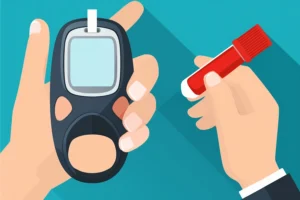Artificial intelligence and robotics are making significant inroads into healthcare systems around the world, revolutionizing how diseases are predicted, diagnosed and treated.
AI-powered predictive tools are now being used to assess individual health risks by analyzing diverse datasets, including genetic profiles, data from wearable devices and electronic health records. These tools enable clinicians to identify early warning signs of conditions such as cardiovascular disease, diabetes and cancer, allowing for timely and tailored interventions that improve patient outcomes.
In surgical care, robotic systems are enhancing precision and minimizing recovery time. A notable milestone was achieved in the United Arab Emirates in November 2024, when Cleveland Clinic Abu Dhabi successfully performed the nation’s first robotic mastectomy. This advanced technique involves removing breast tissue through a small incision, reducing visible scarring and preserving nerves. The minimally invasive approach also offers patients shorter hospital stays and quicker recovery, signaling a major advancement in regional cancer treatment.
AI is also making strides in the field of radiology. Recent developments have seen AI algorithms assist radiologists in detecting early-stage cancers through medical imaging. For instance, an AI-driven platform developed by researchers at the Mayo Clinic has shown great promise in accurately identifying lung cancer in low-dose CT scans, helping to diagnose patients at an earlier stage, when treatment options are more effective.
Additionally, robotics continues to enhance the treatment of chronic conditions. In Japan, a groundbreaking robotic exoskeleton designed to aid patients with severe mobility issues has enabled individuals to regain some independence by assisting with walking. This robotic exoskeleton has shown promising results in rehabilitation, particularly for stroke patients and those with spinal cord injuries.
Experts say that the integration of AI and robotics is not only improving clinical outcomes but also reshaping healthcare infrastructure for better efficiency and accessibility. As healthcare systems increasingly adopt these technologies, they are expected to deliver more personalized, predictive and proactive care.
Disclaimer: This article is for informational purposes only and does not constitute medical advice. Always consult a qualified healthcare provider for guidance regarding medical conditions or treatment options.



